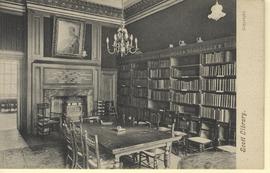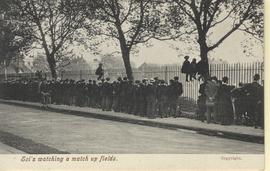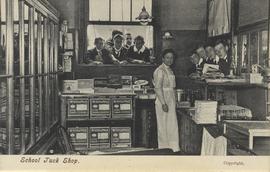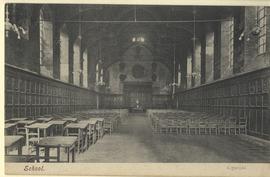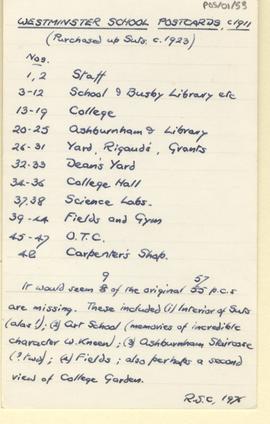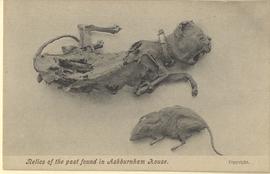- GB 2014 WS-02-POS-01-06
- Item
- c.1911
One copy annotated on reverse by R.S. Chalk, as follows:
'The (reputed) Star Chamber Doorway (see L.E.T. pp 44-5), another casualty of the Blitz.
View from interior of Etheridge’s Room, past the Rod Table (no rods visible, so out of School hours) to Liddell’s Room (C.R. later C.Sh2)
In the the Under School we knew little of the Star Chamber of James I, but had a saying: “People used to go through that door to be tortured-and they still do!” The reference was to the fearsome W.G. Etheridge, dreaded by all.
He was a brilliant teacher both of French and of History, but a ruthless slave-driver and with a streak of cruelty. (He was known by K.SS in his History Set as “The Man of Blood” – back-handed reference to his detestation of King Charles I)
I spent many a gruelling period in this room, first in the Under School, later in C. Upper Shell (School Certificate Form). I owe much to W.G.E.’s teaching, but was not sorry when, having passed School Cert. and attained to C VI, I no longer had to enter Star Chamber!'



